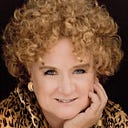
The ever-changing, never-changing shape of chaos
triangle:
tri·an·gle /ˈtrīˌaNGɡəl/
Late Middle English: from Old French triangle or Latin triangulum, neuter of triangulus ‘three-cornered’
noun
- Closed geometric figure with three straight sides and three angles. A basic shape in geometry. Sum of the interior angles is 180°.
- An emotional relationship involving three people, especially one with negative implications. Roles in the triangle include persecutors, victims and rescuers. Variations include alliances of two people against a third. Individuals play different roles, depending on the situation or the person’s preference. Participants are locked in a cycle of drama producing shame, anger, insecurity and loneliness.
My father sat at one end of the dinner table, a poster of Broadway Joe Namath tacked to the wall so that my mother, at her end, could see her current crush while speaking to her husband. We three girls were arrayed to my father’s right, our backs against the kitchen wall. The three boys were on the other side, inevitably draining glass after tall glass of milk — to the point my father once asked my mother, “Couldn’t you start them off with water?”
Celia, the middle daughter, sat equidistant between my mother and my father. She generally kept her eyes on her plate, eating silently — though it’s not like there was a lot of conversation at the table. Most nights, my father just glared at her as he ate, breathing heavily, for no particular reason.
“Show me your fingernails,” he would demand unexpectedly.
She would extend her hands. Inevitably, there was a dark crescent beneath the tips of her nails, despite the fact that she, alone among us, had a fingernail scrub brush. Lacking any other reason to berate her, he could always count on the dirty fingernails. “Go clean them,” he’d say.
“Jim,” my mother would say. The rest of us would concentrate on our food, swallowing past the lumps in our throats. In the silence, one of the boys would say, “More milk, please.”
